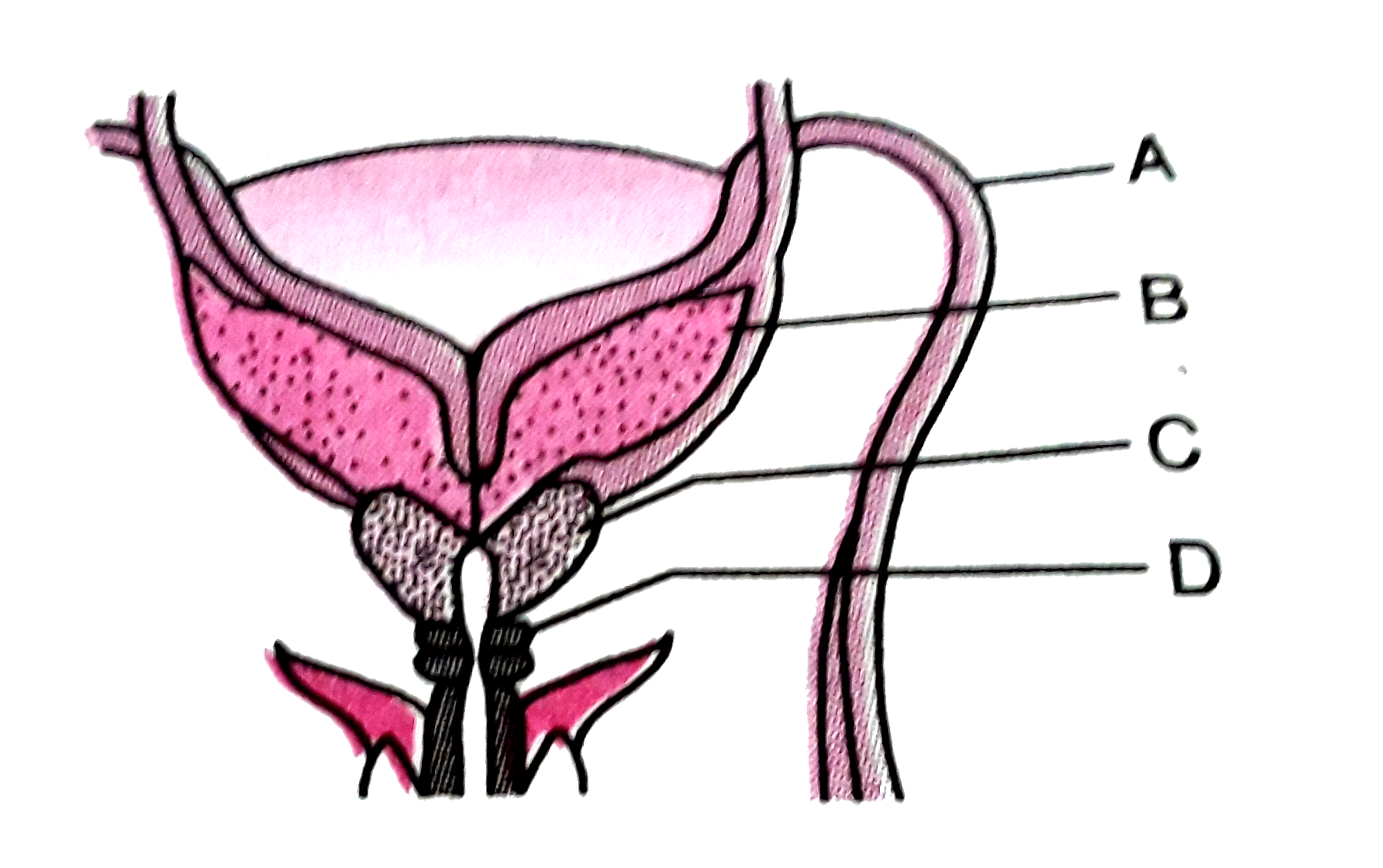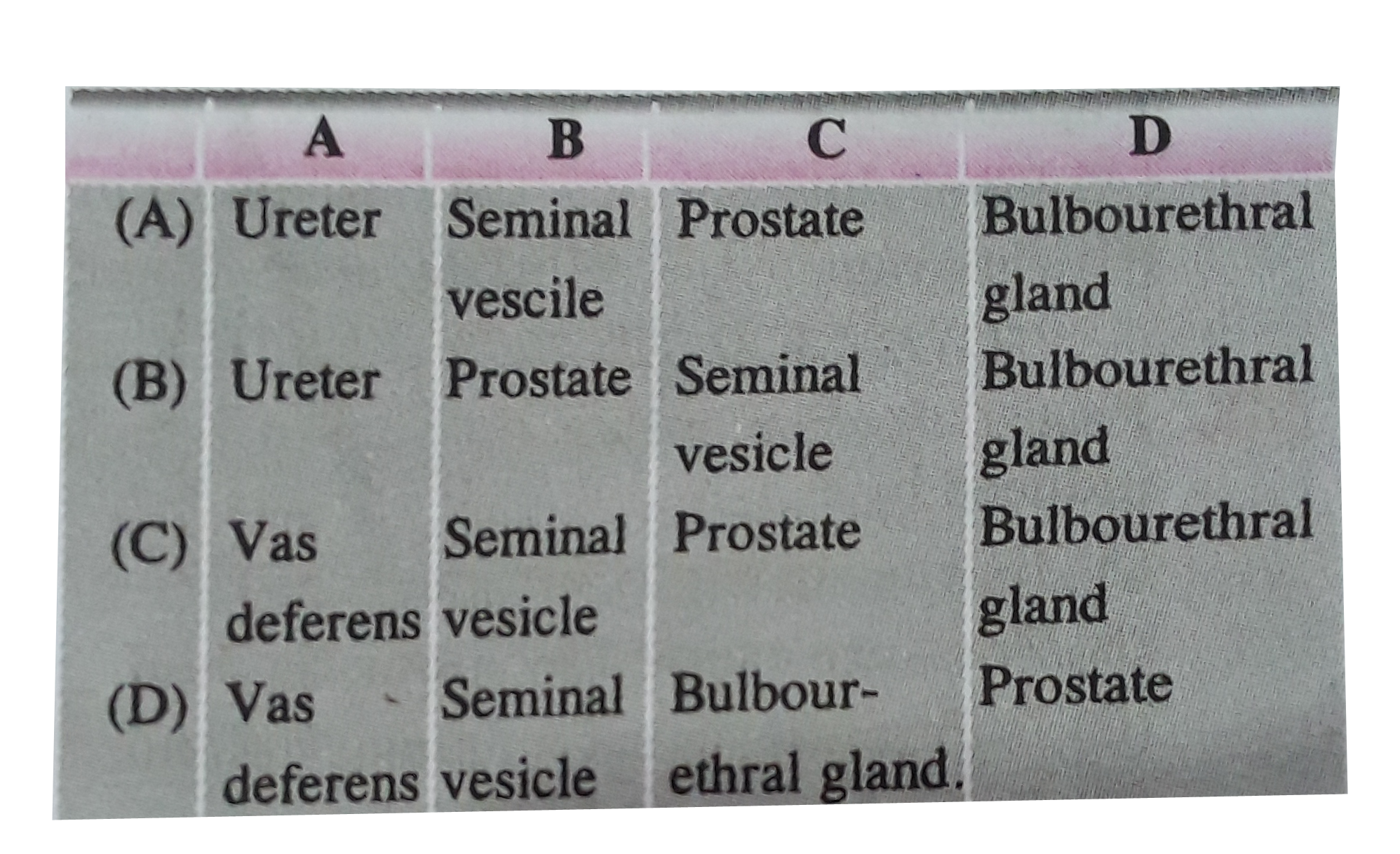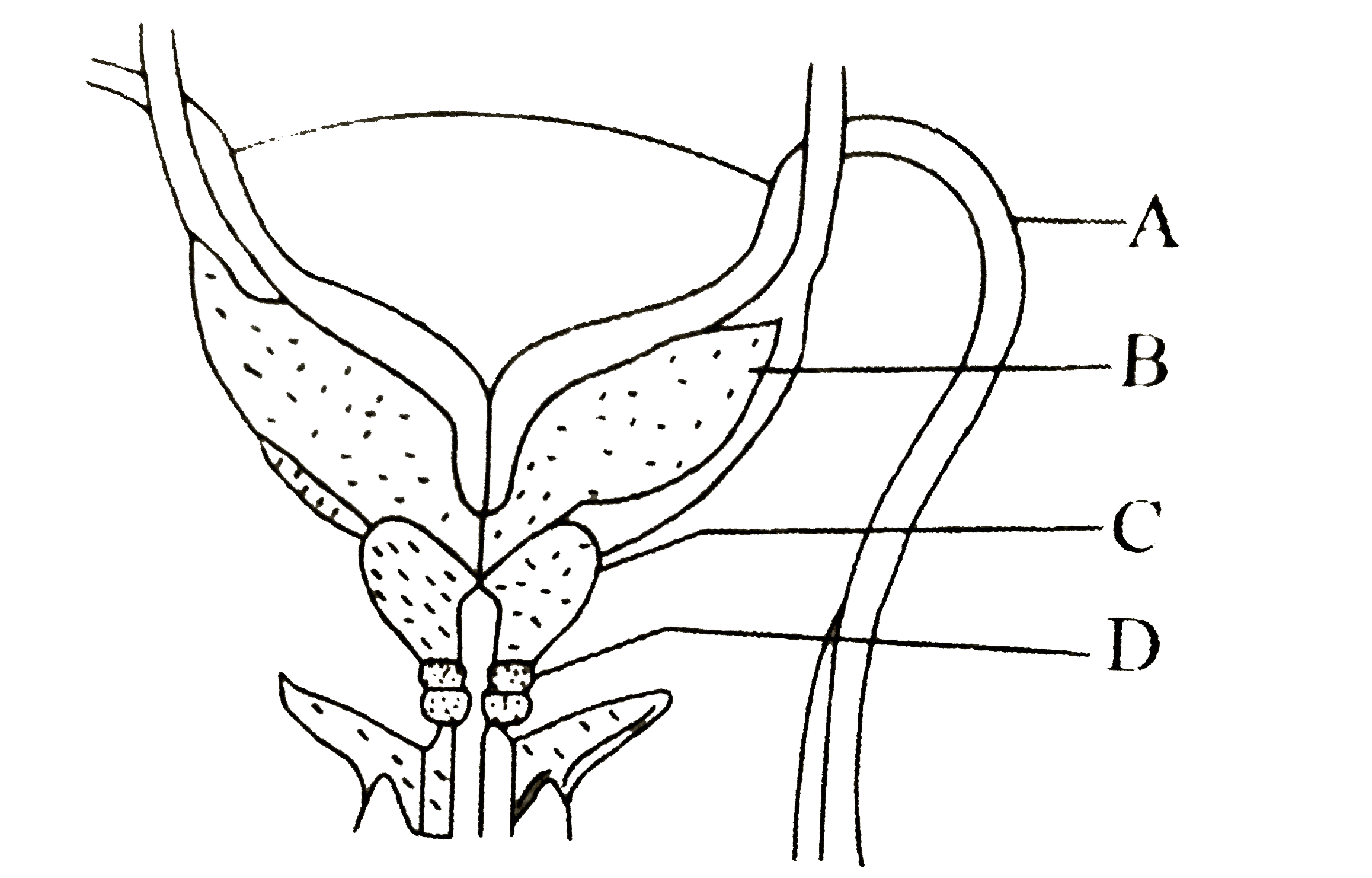The following is a part of d-block of the periodic table
'(##VPU_HSS_CHE_XII_C08_E03_004_Q01##)'
a. Compare the atomic size of elements-of set A B and set B C of same group
b. Name the phenomenon behind the relation between elements of set B C
c. Give reason for the phenomenon.
a. Atomic. Size of set B elements is greater than that of set A elements because new shell is added: But atomic size of set B elements is comparable with that of set C elements. b. Phenomenon behind the relation between elements of set B and C is lanthanoid contraction: c. Lanthanoid contraction is due to the poor shielding effect of very diffused. orbitals.
Topper's Solved these Questions
Similar Questions
Knowledge Check
Select the correct set of names for the parts A,B,C,D

 AABCDUreterSeminalProstateBulbourethral glandBABCDUreterProstateSeminal verticleBulbourethral glandCABCDVas deferensSeminal vesicleProstateBulbourebral glandD{:(A,B,C,D),("Vas deferns","Seminal vesicle","Bulbourethral gland","Prostate"
AABCDUreterSeminalProstateBulbourethral glandBABCDUreterProstateSeminal verticleBulbourethral glandCABCDVas deferensSeminal vesicleProstateBulbourebral glandD{:(A,B,C,D),("Vas deferns","Seminal vesicle","Bulbourethral gland","Prostate"
Select the correct set of names for the parts A,B,C,D


View SolutionSelect the correct set of names set of names for the parts A, B, C, D

View SolutionIf R is a relation from a set A to a set B and S is a relation from B to a set C, then the relation SoR a) is from A to C b) is from C to A c) does not exist d) None of these
View Solutionabout to only mathematics
View SolutionThe position of elements A,B,C,D and E in the periodic table are shown below :

Which is larger in size (i) D or E (ii) B or C.
View SolutionIf R is a relation from a finite set A having m elements to a finite set B having n elements then the number of relations from A to B is
a. 2mn b. 2mn−1 c. nm d. mn
View SolutionIf the first five elements of the set xi+5,i=1,2,3...5 and the next five elements are replaced by xj −5,j=6...10 then the mean will change by
View Solution
